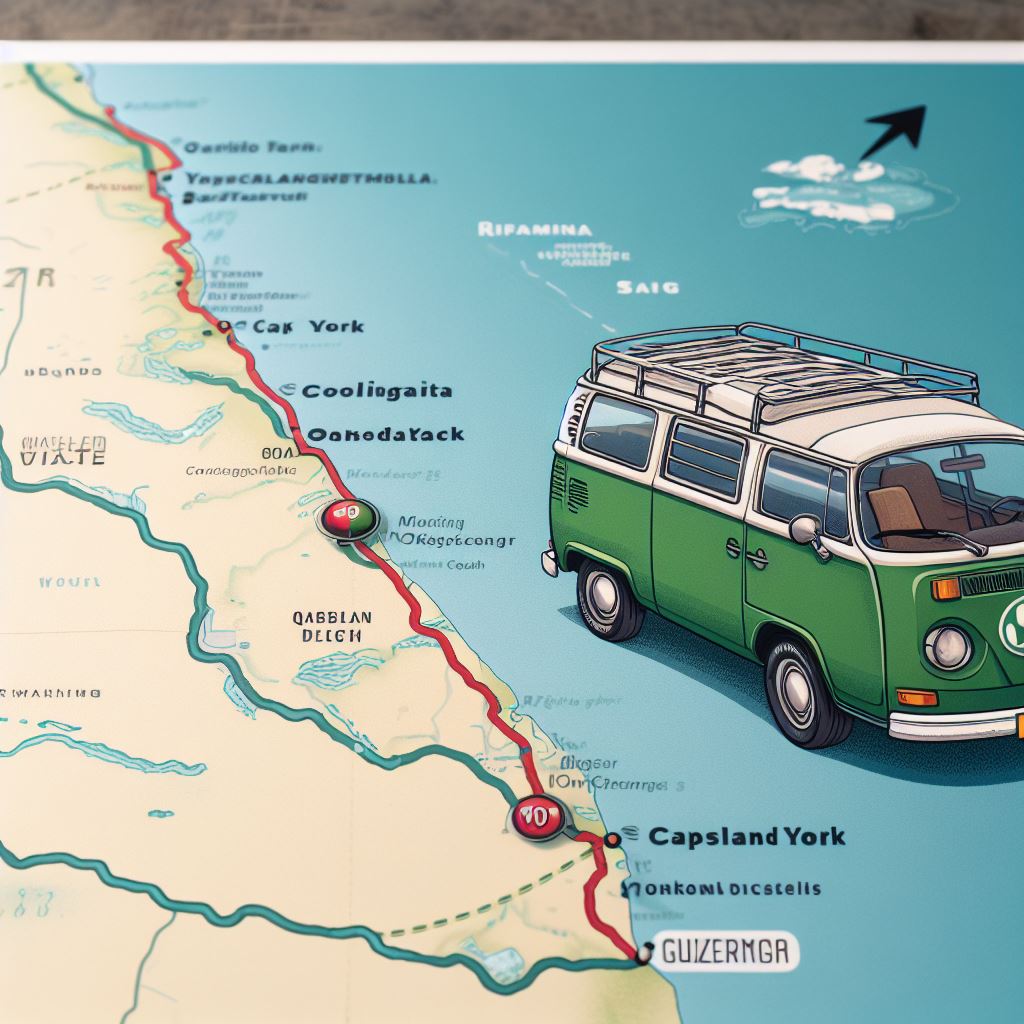Don’t let the Tail Wag the Dog
DATELINE: BRISBANE, AUSTRALIA
What is Business Strategy?
Approaching 18 years as a business coach, this is a frequently asked question that … I sometimes give way too detailed an answer to.
So since it’s the topic of this week’s Blackboard Fridays Episode 30, what better time to provide a straightforward definition.
This email will help you better understand what business strategy is, and how to best approach strategy to help you achieve your business dreams. “What’s Your Como?”
Prefer excessive detail? Then don’t fret – after providing the simple definition, I will then explain the nuances at length with images of green combi vans.
And here are the links you need for the immensely dense guide to business strategy at different phases of your business growth.


Implementing great business strategy requires understanding
of how these size businesses are fundamentally different
What Business Strategy is NOT
It helps to begin by discussing what business strategy is not, to dispel some of the more confusing myths.
Business Strategy is NOT:
- Setting your Vision – though Vision will guide your Strategy;
- Agreeing on your Mission, Purpose and Values, though again doing this exercise first will help you design better business strategy;
- Doing a SWOT analysis. I’ve ranted about SWOT enough, but essentially understanding your business today is not the same as planning for its future;
- Documenting how you do what you do, invaluable as clear processes and procedures are;
- Golfing all day until you come up with a new plan for the company, which nobody remembered to write down so you’ll have to do it again next year.
Because it’s such a broad word, Strategy gets pulled into a whole lot of different activities. As a result, many businesses feel they both know what business strategy is – and also how business strategy lives and breathes in their business. Only to have that confidence fall apart when I start asking them some simple strategic questions.
And I’m guilty of this myself. When a business coaching client wants to improve their Culture or Brand, I might encourage them to develop a “Culture Strategy” or “Brand Strategy” – a brief document that explains what decisions they are making on that topic, why they are making them, and who is responsible for executing those changes.
While that’s useful for approaching a specific business topic, it doesn’t answer the overall question about what business strategy means.
So, what is it?
Here’s the simple answer:
A business strategy is a road map of ordered priorities
that will take you from where you are now,
to where you want to be in the future,
with a full understanding of why you are in business
and an underpinning of commercial reality.
If you’re just looking for the one-sentence answer to your question, I hope that has satisfied your request.
If, however, you’re interested in understanding how to design and implement great strategy in your business, then it will probably help us to break down that definition.
At this point, if you’re already bored, why not just watch this Blackboard Fridays episode. Or all of the episodes under the #Strategy tag.
from where you are now
You’re planning a road trip, only instead of a trip from Coolangatta to Cape York your trip will take you and your business from NOW to WHERE you want to be.

what you sound like when you try and explain your Strategy to your team
It’s critical at the start of the journey to understand where your business is today. I recommend discussing this with your business partners and leadership team across three areas:
- Commercially (including Revenue, Profit, Business Valuation, and any other key financial indicators you use),
- Culturally (from a general idea of how the business feels all the way up to your Culture Paper), and
- Personally (how is the business supporting you and the other business owners).
This is your starting point. It may not be pretty, and (especially if it’s not pretty) you want to record and remember this starting point. Because in 18 months, when the first of your big strategic steps have been fully implemented and that change has become ‘business as usual’, you will forget the pain points you are currently experiencing.
Indeed, one thing that kills many great business strategies is forgetting that pain within 3-6 months. Instead of developing an improved system that ensures those concerns never return, you and your business settle for a quick fix. Real change never takes place, and sure enough, you’ll be back in that pain sooner rather than later.
Writing this down and holding yourselves accountable to changing those feelings and financials is an important step.
to where you want to be in the future
Once you have a clear idea of the business now, commercially, culturally, and personally … where do you want to take it?
Ideally, you can match up all those key elements. If current turnover is $2 million, valuation is $1 million, it’s feeling frustrating and you’re only taking home $150,000…
… then your WHERE vision maybe $12 million in turnover, with a valuation of $8 million, feeling relaxed and paying you $900,000.
Completing a full Vision exercise with your business partners isn’t absolutely necessary at this step, but will ensure you are all aligned to the direction and destination of the business, especially if you engage an external facilitator or coach to manage the session so you can all participate as equals.
You do NOT want to discover halfway through implementing your strategic road map that one of your business partners wants to sell at $3 million and will derail everything if he doesn’t get his way.
It may also be that you want a business strategy that only takes you part-way to your much larger vision.
My biggest piece of advice is to define that WHERE clearly, and make sure it’s still exciting to you and the team, and then build the strategy to get you there … rather than picking an arbitrary time frame like ‘a five-year plan’.
Focus on the destination and the strategic steps and you’ll grow faster; connecting them with an ad hoc time frame makes your strategy subject to clock-watching!

with a full understanding of why you are in business
Back to the road trip analogy, and while it’s imperative to know where you are driving to … it’s even more critical that you and your passengers are agreed about WHY you’re making this trip.
Maybe you’re going to Cape York for a full moon festival and you need to be there as fast as possible. Maybe this is a once-in-a-lifetime opportunity to experience the beautiful Queensland coastline.
Both of those are excellent reasons for a trip. Neither is better or worse, more right or more wrong, than the other.
But imagine if half the passengers in your car want to drive through the night as fast as possible … and the other half want to stop for a swim at every beach along the way. How far into the trip before you’re all ready to kill each other? Bundaberg? Maryborough? Will you even make it past Surfers Paradise on the Gold Coast?
In business, there are a number of key WHYs – the layers of context. And in this context – influencing your business strategy – the two key questions are related to
- your business purpose (sometimes called your mission or intent; WHY you are in business from an internal perspective) and
- your brand promise (WHY you are in business from an external perspective).
Como, my coaching business, exists to help you create freedom and impact through business ownership. This isn’t lip-service marketing guff; it’s a decision-making filter that guides my strategy.
Given the choice between two options, or when my board are confused about the best course of action, we ask ourselves ‘Will this help create freedom and impact for more people?’
If the answer is no, we rethink.
So that’s what I mean by defining what business strategy is by having “a full understanding of why you are in business”.
Because if your strategy does not reflect your purpose and brand, it is doomed to fail. You’re destined to devolve into a McDonald’s carpark screaming match arguing about which road-tripping tunes to play next … when all you needed to do was agree to upfront on why you were making this trip in the first place.

a road map of ordered priorities
I know this one is out of order, but it’s impossible to define your road map without making sure we’re clear about NOW, WHERE, and WHY you’re on this journey.
By now, it’s probably obvious what I mean by “a road map of ordered priorities”. Ultimately, this is your business strategy – a list of key steps you need to take, in a specific order.

At the risk of belabouring my Queensland road trip metaphor, you know you need to see Brisbane, the Sunshine Coast, Townsville and Cairns as part of your journey, and it’s pretty obvious that there’s an optimal order in which to visit them.
The same is true, though less obviously, with your business strategy.
Take one of my home services clients who are screaming for more tradiespeople to help their business grow. They knew that to sell their business for the best valuation – the reason behind completing a business strategy – they needed to have a strong Brand and Culture. But they saw this as something they would do ‘down the track’ once they had the right size team and were more profitable.
They didn’t realise that part of their failure to grow that team was their lack of strong Brand and Culture. They had the right steps on their road map, but they had them in the wrong order and it was holding them back. As a result of my coaching, their new website has a recruitment page with their current team discussing key elements of their culture. And it’s making recruitment so much easier.
So a business strategy needs to include all the necessary steps to take you from today to your vision (or whatever destination you define). Even more importantly, it needs to order those steps in the best way.
And this is one reason why I say business coaching doesn’t work for small businesses in Australia – because pure coaching is about asking the right questions and assuming the small business owner has all the answers. In my experience, small and medium-size business owners – even those with great partners – don’t know what they don’t know, and need to support of someone who can also bring strategic business advice and tell them when their plans are missing steps or are out of order.
One more thing about a road map – changing the order has significant flow-on effects that need to be considered. If you’re halfway to Cape York and someone tells you how beautiful Melbourne is to visit (and it is … to visit) would you rearrange your map to go via Melbourne? Of course not!
Yet that’s just the kind of distraction entrepreneurs are famous for, setting out the key steps of their long term vision … and then three months later chucking in a new website and social media plan because they saw a cool presenter at a seminar.

an underpinning of commercial reality
Since we’re asking, ‘What is business strategy’, it is necessary to acknowledge the requirement of commercial reality.
It doesn’t matter how altruistic your mission or personal desire, whether you’re an investment bank, not for profit, or social enterprise, the dollars need to make sense.
So when I’m talking about the commercial reality of good business strategy, I set aside my care for whether you’re in business to make millions or change the world (or both). I just want to make sure that your journey from NOW to WHERE doesn’t fail for lack of financial consideration.
Lack of financial systems is one of the reasons why great business ideas fail. The framework I use and recommend for Growth Planning involves building a capacity model of your business engine – giving you an objective view of how much power (revenue) your business engine can produce, and which levers you can pull to change the revenue and profit outcomes.
With this model – however rough and ready you may build it – you can stress test the milestones on your strategic road map.
Launching that new product in two years? How much investment – RND, Marketing, Recruitment etc – will you need to make in advance of selling the first unit? Have you got enough free cash flow to fund that investment?
And honestly, most businesses have a pretty simple model largely dependent on people and time. While I recommend creating new products that help you escape that business model, and have a lot of fun with my clients doing just that, chances are you can achieve your vision in the next few years simply by understanding your business financials and replicating the key elements a few more times.
So again, what is business strategy?
A business strategy is a road map of ordered priorities
that will take you from where you are now,
to where you want to be in the future,
with a full understanding of why you are in business
and an underpinning of commercial reality.
It’s agreeing to the key steps your business needs to take to achieve your vision, powered from above and below by your motivation to be in a business and a financial position that creates your freedom and impact.
On the one hand, it’s a simple set of ingredients. And if you’re in business, then you already have most of that in place – whether it’s conscious, documented, and shared with your team or not.
But if it sounds like a lot, and you absolutely, positively want to make sure that the business strategy you have for your organisation is the best strategy it can be, then either take the Business Freedom Quiz or reach out to organise a chat.
I work one-on-one with a small number of privately-owned businesses each year, helping inspire their ambition, design their business strategy, and implement to fully realise their dreams.
Jacob Aldridge
International Business Coach
PS: Did someone forward you this email? Get your own copy (and sound smarter than them next Friday) by subscribing here.
A reminder that you can choose our less frequent emails by clicking here






